
Micro and Nano Engineering
metrics 2024
Fostering groundbreaking discoveries in nanotechnology.
Introduction
Micro and Nano Engineering, published by ELSEVIER, is a premier open-access journal dedicated to advancing the fields of atomic and molecular physics, condensed matter physics, as well as electrical and electronic engineering. With an E-ISSN of 2590-0072, the journal has established itself as an influential platform for the dissemination of cutting-edge research and innovative methodologies in micro- and nano-scale technologies since its inception in 2018. The journal proudly holds a Q2 category ranking in several discipline-specific quartiles for the year 2023, including Atomic and Molecular Physics, highlighting its significance in the academic community. Located in Amsterdam, Netherlands, Micro and Nano Engineering offers researchers and practitioners a unique opportunity to publish their work and gain visibility through its rigorous peer-review process and high-quality editorial standards. The open-access model ensures that research findings are accessible to a global audience, fostering collaborative advancements and ongoing discourse within these dynamic fields. Whether you are a researcher, professional, or student, Micro and Nano Engineering is your go-to source for pivotal developments in nanotechnology and engineering applications.
Metrics 2024
 -
- 2.80
2.80 3.00
3.00 -
-Metrics History
Rank 2024
IF (Web Of Science)
JCI (Web Of Science)
Quartile History
Similar Journals
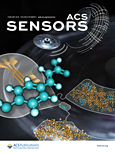
ACS Sensors
Unveiling innovative solutions in sensing systems.ACS Sensors, published by the American Chemical Society, is a premier journal focusing on the rapidly evolving field of sensors and sensing technologies. With an ISSN of 2379-3694, it has established itself as a key resource for researchers and professionals in bioengineering, fluid flow, instrumentation, and process chemistry. The journal holds a remarkable Q1 ranking across multiple categories, indicating its influential position within the academic community, with Scopus rankings placing it in the top echelons of its fields. Since its inception in 2016, ACS Sensors has provided high-quality, peer-reviewed research that drives innovation and application in sensor technology. The journal encourages submissions of original research articles, reviews, and technical notes that advance the understanding of sensing systems, showcasing novel methodologies and applications. While currently operating under a subscription model, the journal is committed to enhancing accessibility to cutting-edge discoveries. By fostering a collaborative environment for scientists and engineers, ACS Sensors is vital in bridging the gap between theory and practical applications, making it an essential read for those engaged in sensor development and application across various disciplines.
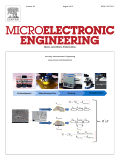
MICROELECTRONIC ENGINEERING
Unveiling New Horizons in Atomic and Molecular PhysicsMICROELECTRONIC ENGINEERING is an esteemed journal published by Elsevier, focusing on the rapidly evolving fields of microelectronics and nanotechnology. It encompasses a wide array of topics, including atomic and molecular physics, condensed matter physics, and the engineering aspects of electronic, optical, and magnetic materials. With its impressive impact factor and recognition as a Q2 journal in several categories, it provides an invaluable platform for researchers and professionals to disseminate their groundbreaking findings. The journal has been instrumental in advancing our understanding and application of microelectronic technologies since its inception in 1983. Currently ranked highly within various specialized categories in Scopus, MICROELECTRONIC ENGINEERING offers targeted access to cutting-edge research, fostering innovation and collaboration in the world of electronic engineering and materials science. As we look towards the future, with convergence continuing to shape research until 2024, the journal remains a critical resource for those dedicated to pushing the boundaries of knowledge in these dynamic fields.

Micro and Nano Systems Letters
Connecting Ideas, Transforming HealthcareMicro and Nano Systems Letters, published by SPRINGERNATURE, is a prominent peer-reviewed journal dedicated to advancing the field of micro and nanosystems, with a special focus on biomaterials and biomedical engineering. Since its inception in 2013, this Open Access journal has provided a vital platform for researchers and practitioners to disseminate innovative findings and share insights that contribute to the growing body of knowledge in these rapidly evolving disciplines. With a remarkable impact reflected in its Q1 quartile rankings in both biomaterials and biomedical engineering, and impressive Scopus ranks placing it within the top tier of its fields, Micro and Nano Systems Letters plays a critical role in fostering collaboration and knowledge exchange among scientists and engineers worldwide. The journal is accessible globally, ensuring that research is widely disseminated and impacting a diverse audience to drive progress in technology and healthcare solutions.
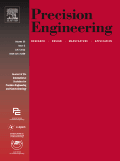
PRECISION ENGINEERING-JOURNAL OF THE INTERNATIONAL SOCIETIES FOR PRECISION ENGINEERING AND NANOTECHNOLOGY
Innovative Insights: Shaping the Future of Precision EngineeringPRECISION ENGINEERING - JOURNAL OF THE INTERNATIONAL SOCIETIES FOR PRECISION ENGINEERING AND NANOTECHNOLOGY, published by Elsevier Science Inc, stands at the forefront of advancements in engineering and nanotechnology since its inception in 1979. With a commendable impact factor and a ranking of Q1 in Engineering and Q2 in Nanoscience and Nanotechnology, this journal offers a premier platform for disseminating cutting-edge research that merges precision engineering with nanotechnology innovations. Its Scopus ranking positions it within the top 13% of journals in general engineering, making it an essential resource for academics and industry professionals alike. Although it does not currently offer open access, the journal promotes high-quality, peer-reviewed research that is crucial for ongoing developments in the field. Researchers, professionals, and students dedicated to precision engineering and related disciplines will find this journal to be an invaluable repository of knowledge and ideas.
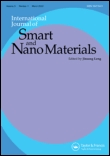
International Journal of Smart and Nano Materials
Innovating with Smart Solutions and Nano TechnologiesThe International Journal of Smart and Nano Materials is a leading peer-reviewed publication in the fields of civil and structural engineering, mechanics of materials, and materials science, published by Taylor & Francis Ltd. With its notable Open Access format since 2010, this journal aims to disseminate innovative research and advancements in smart materials and nano technologies, which are crucial for the development of sustainable and efficient engineering solutions. The journal has established a strong reputation, being classified in the Q1 category for Civil and Structural Engineering and Mechanics of Materials, and ranked highly in Scopus with impressive percentiles, illustrating its impact within the academic community. Covering research from 2010 to 2024, it serves as an essential resource for researchers, professionals, and students seeking to stay at the forefront of material innovation and engineering prowess. Current access options facilitate the broad distribution of knowledge, reflecting the journal's commitment to advancing scientific inquiry and application in an increasingly nanotechnology-driven world.
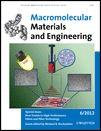
MACROMOLECULAR MATERIALS AND ENGINEERING
Advancing the Frontiers of Macromolecular InnovationMACROMOLECULAR MATERIALS AND ENGINEERING, published by Wiley-VCH Verlag GmbH, is a distinguished open-access journal that since its inception in 1989 has been at the forefront of research in the fields of Chemical Engineering, Materials Chemistry, and Polymer Science. Recognized with a top-tier Q1 ranking in multiple categories for 2023, including Chemical Engineering and Organic Chemistry, this journal facilitates cutting-edge discoveries and advancements by providing a platform for authors to share innovative findings. With an impressive Scopus ranking, positioned within the top percentiles in several interdisciplinary categories, MACROMOLECULAR MATERIALS AND ENGINEERING is an essential resource for researchers, professionals, and students who are engaged in the development and application of macromolecular materials. As an open-access journal since 2023, it enhances accessibility and fosters collaboration within the global scientific community. The journal, headquartered in Germany, aims to publish high-quality, peer-reviewed articles that drive the scientific dialogue forward in the rapidly evolving fields of materials science and engineering.

Micromachines
Advancing micro-scale innovation for a connected future.Micromachines, published by MDPI, is a premier open-access journal that has been advancing the field of engineering since its inception in 2010. With a focus on the integration of micro- and nano-scale technologies, the journal encompasses a broad spectrum of disciplines, specifically in Control and Systems Engineering, Electrical and Electronic Engineering, and Mechanical Engineering, reflected in its commendable Q2 quartile rankings across these categories as of 2023. Operating from the heart of Switzerland, Micromachines provides a platform for researchers, professionals, and students to disseminate innovative research that explores the cutting-edge of micromachine technology and its applications across various industries. With an impressive Scopus ranking, showcasing its influence and reach – 74th percentile in Mechanical Engineering, 70th in Control and Systems Engineering, and 68th in Electrical and Electronic Engineering – this journal is invaluable for those seeking to contribute to and stay informed about the advancements in micromachine research. The open-access format ensures that groundbreaking discoveries are readily available to a global audience, fostering collaboration and intellectual discourse within the scientific community.
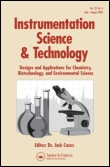
INSTRUMENTATION SCIENCE & TECHNOLOGY
Connecting Researchers to the Future of InstrumentationInstrumentation Science & Technology, published by Taylor & Francis Inc, is a leading journal in the fields of Chemical Engineering, Environmental Science, and Instrumentation. With an ISSN of 1073-9149 and an E-ISSN of 1525-6030, this established publication spans a rich history from 1968 to 1972, 1974 to 1977, 1979 to 1982, 1984 to 1990, and continuing through to 2024. Positioned in the Q3 category of its subject areas, it ranks competitively within the Scopus framework, notably achieving rank #103/233 in Environmental Science and #138/273 in Chemical Engineering. Aimed at researchers, professionals, and students, this journal serves as a crucial platform for advancing knowledge in instrumentation technologies and their applications across various disciplines. Although not an open-access journal, it provides valuable insights and peer-reviewed articles that are essential for staying at the forefront of instrumentation science.

Advanced Materials Technologies
Advancing Research for Tomorrow's TechnologiesAdvanced Materials Technologies is a leading scholarly journal published by WILEY, dedicated to the rapidly evolving fields of materials science and engineering. With an impressive 2023 impact factor reflected in its Q1 ranking in Industrial and Manufacturing Engineering, Mechanics of Materials, and a notable position within the materials science community, this journal stands as a premier platform for disseminating innovative research and technological advances. The journal encompasses a diverse range of topics, from the fabrication and characterization of advanced materials to their applications in various industries, thus fostering interdisciplinary collaboration among researchers, professionals, and students. Since its inception in 2016 and looking forward to 2024, Advanced Materials Technologies continues to provide unparalleled access to high-quality, peer-reviewed articles, ensuring that it remains a vital resource for anyone involved in the design and optimization of advanced materials.

Nanotechnology and Precision Engineering
Unlocking the potential of nanoscale advancements.Nanotechnology and Precision Engineering is a leading open access journal published by AIP Publishing, dedicated to advancing the fields of nanotechnology and precision engineering. Established in 2006, the journal has become a vital resource for researchers, professionals, and students, reflecting the latest advancements in Electrical and Electronic Engineering, Industrial and Manufacturing Engineering, Instrumentation, Mechanical Engineering, and Nanoscience. With an impressive variety of quartile rankings in Scopus—notably Q1 in several key engineering domains—the journal provides a robust platform for disseminating groundbreaking research. Noteworthy aspects include its open access format introduced in 2018, ensuring that high-quality research is freely accessible to a global audience. By maintaining a commitment to excellence and collaboration, Nanotechnology and Precision Engineering plays a crucial role in shaping the future of technology and innovation.